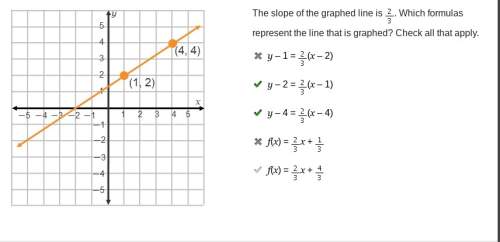
Mathematics, 21.10.2020 23:01 xinkyx616
How is the graph of the parent quadratic function transformed to produce the graph of y = negative (2 x + 6) squared + 3?
The graph is compressed horizontally by a factor of 2, shifted left 3 units, reflected over the x-axis, and translated up 3 units.
The graph is reflected over the x-axis, compressed horizontally by a factor of 2, shifted left 6 units, and translated up 3 units.
The graph is stretched horizontally by a factor of 2, reflected over the x-axis, shifted left 3 units, and translated up 3 units.
The graph is reflected over the x axis, stretched horizontally by a factor of 2, shifted left 6 units, and translated up 3 units.

Answers: 3


Other questions on the subject: Mathematics

Mathematics, 21.06.2019 12:30, parkerpark9524
Which statement about the relative areas of triangle abd and triangle xyz is true
Answers: 1

Mathematics, 21.06.2019 19:00, DestyHilBan1183
What are the solutions of the system? solve by graphing. y = -x^2 -6x - 7 y = 2
Answers: 2

You know the right answer?
How is the graph of the parent quadratic function transformed to produce the graph of y = negative (...
Questions in other subjects:





Mathematics, 07.10.2019 18:40

History, 07.10.2019 18:40

Chemistry, 07.10.2019 18:40






